
Climate Change and Food Security
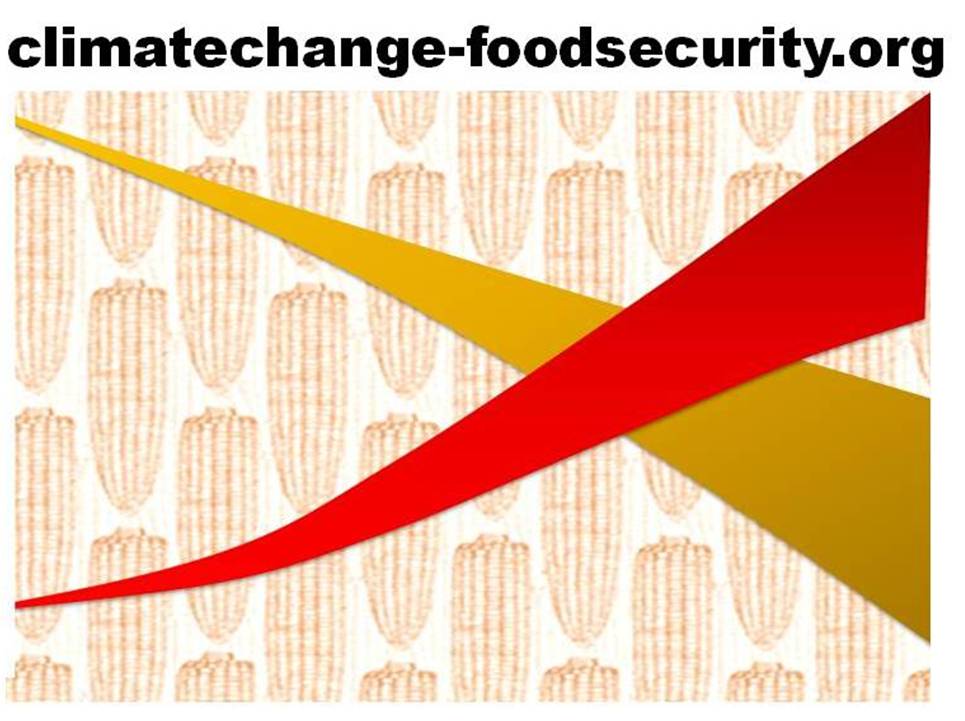
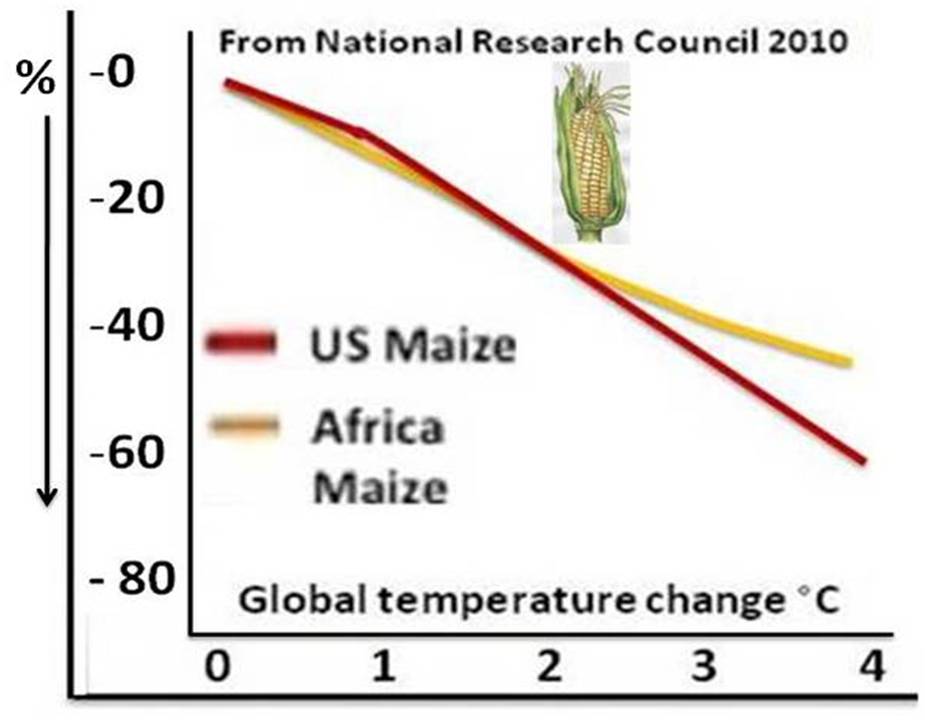
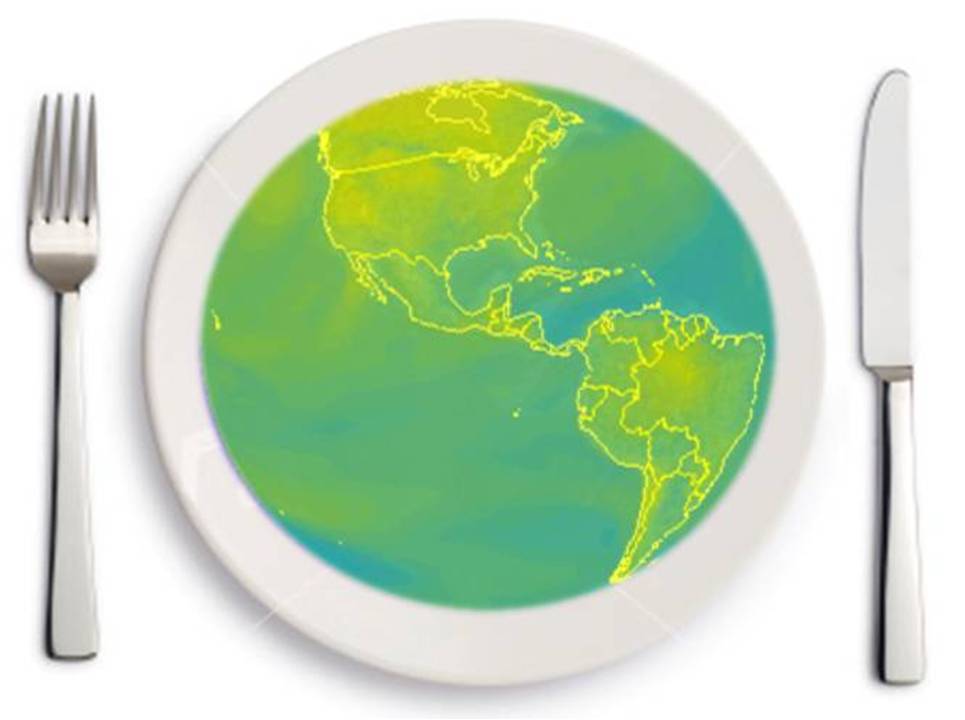
There is evidence that global climate change is already starting to have a negative impact on global agricultural production
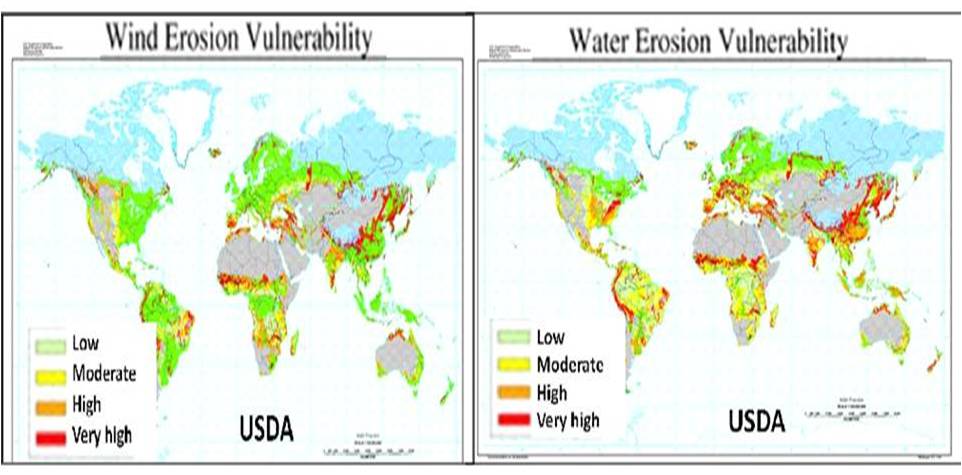
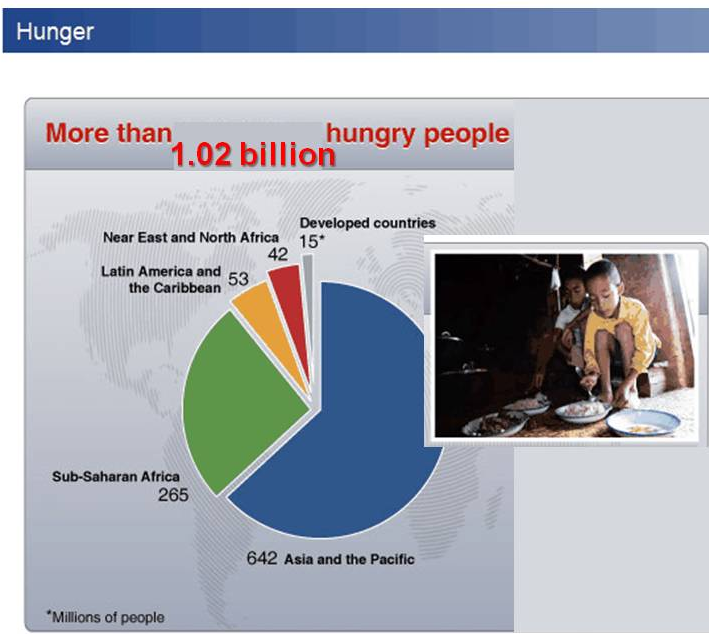
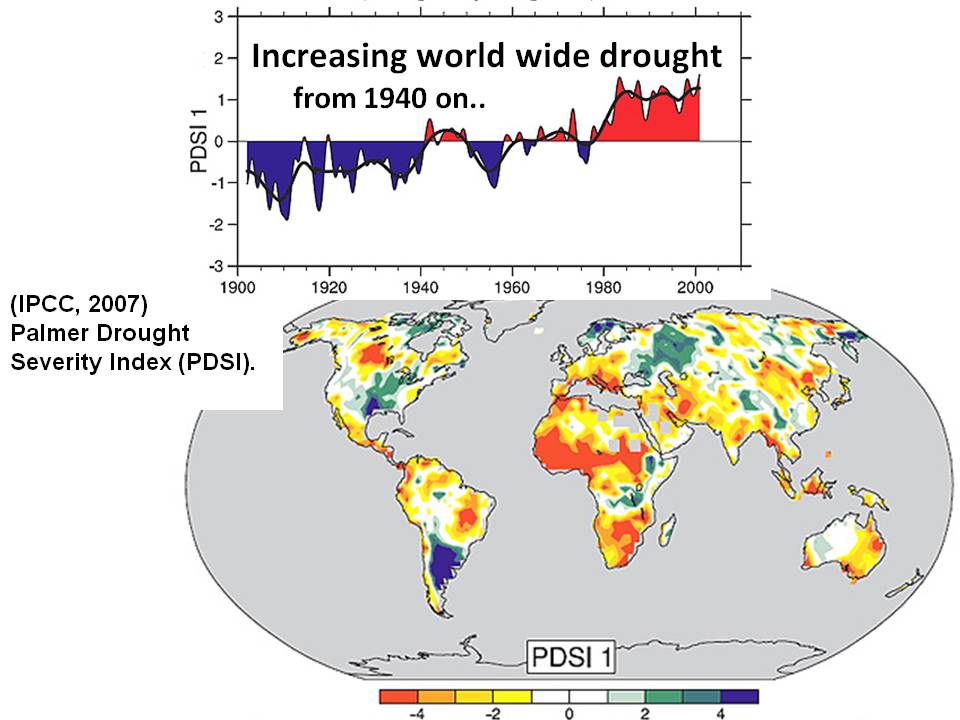
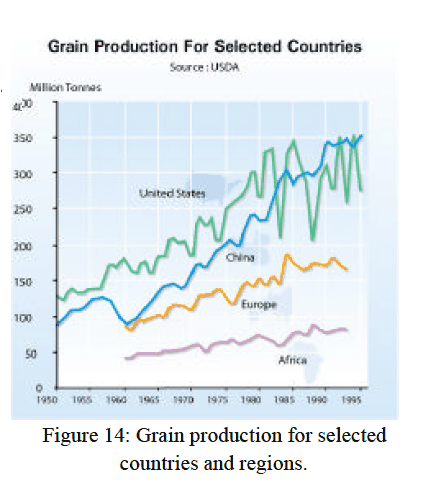
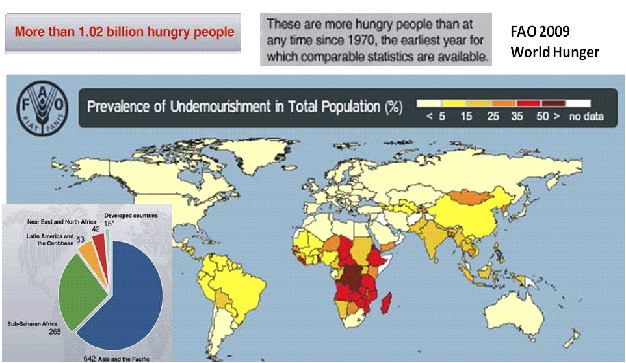

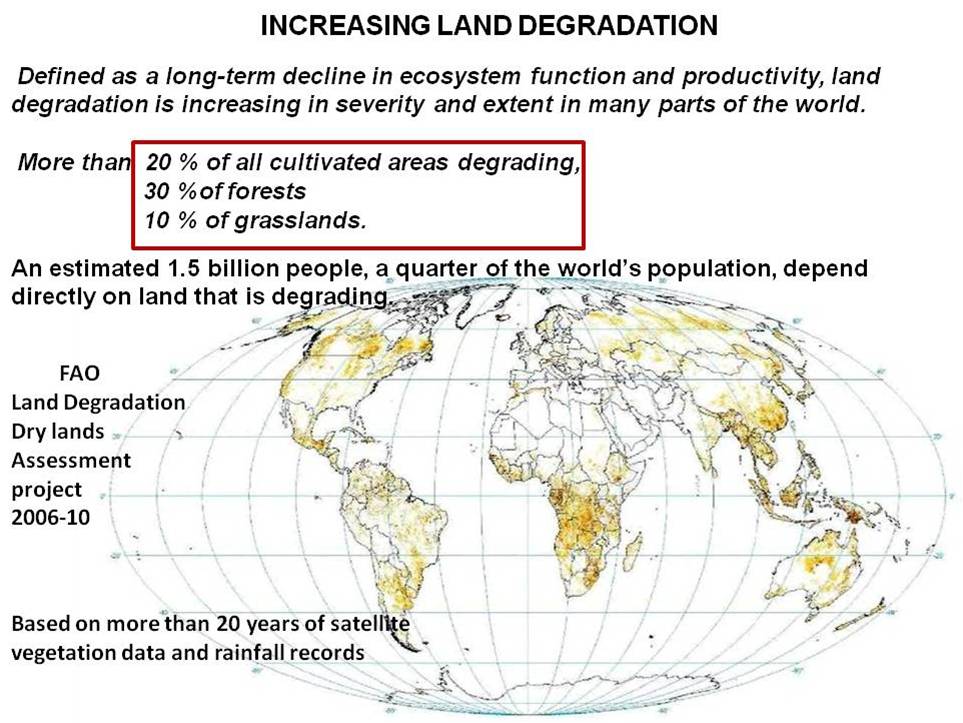
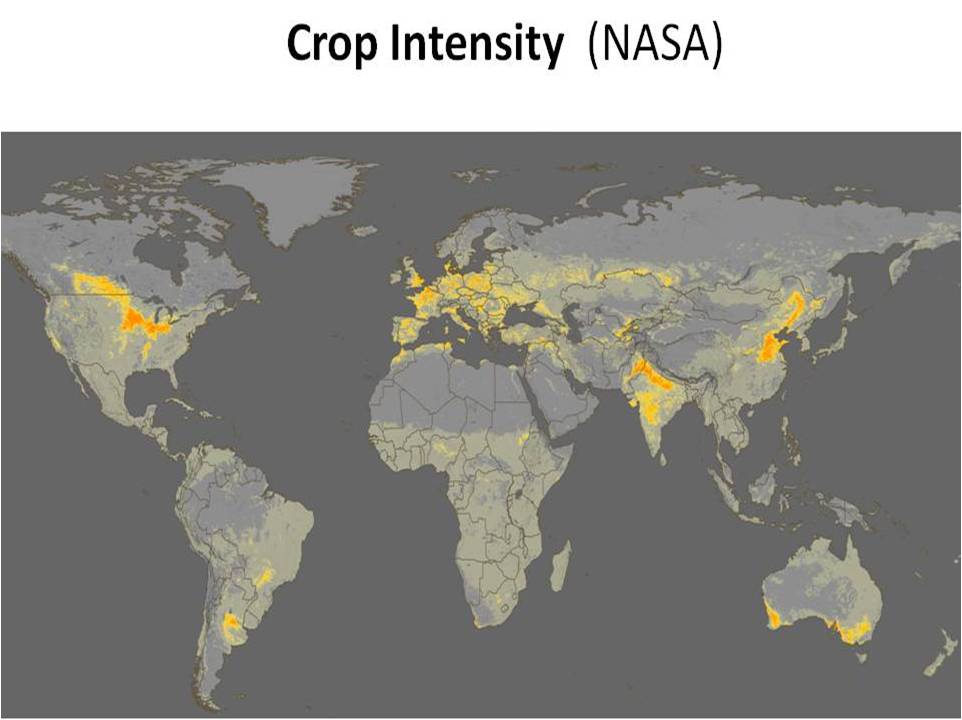
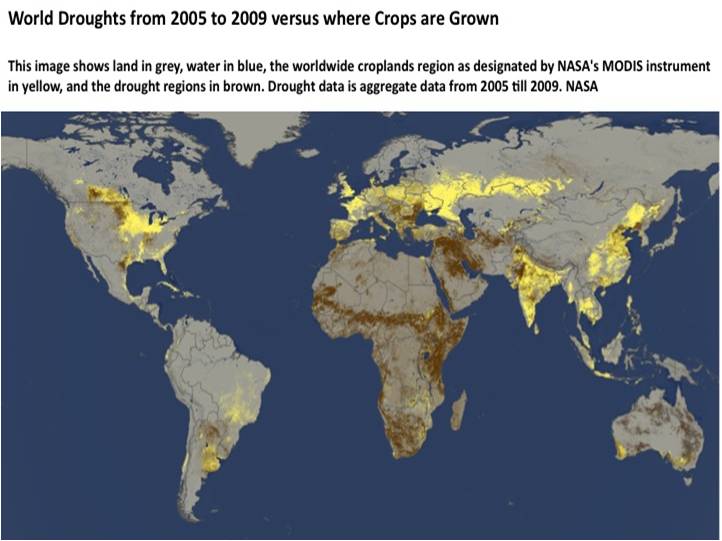
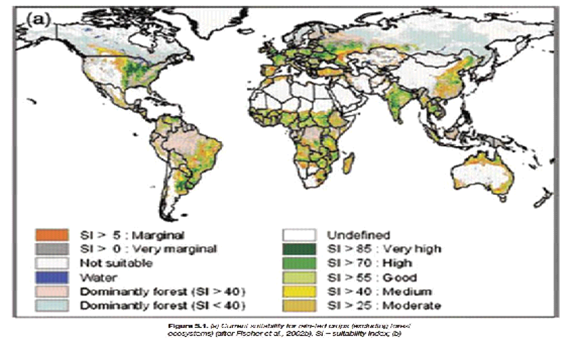
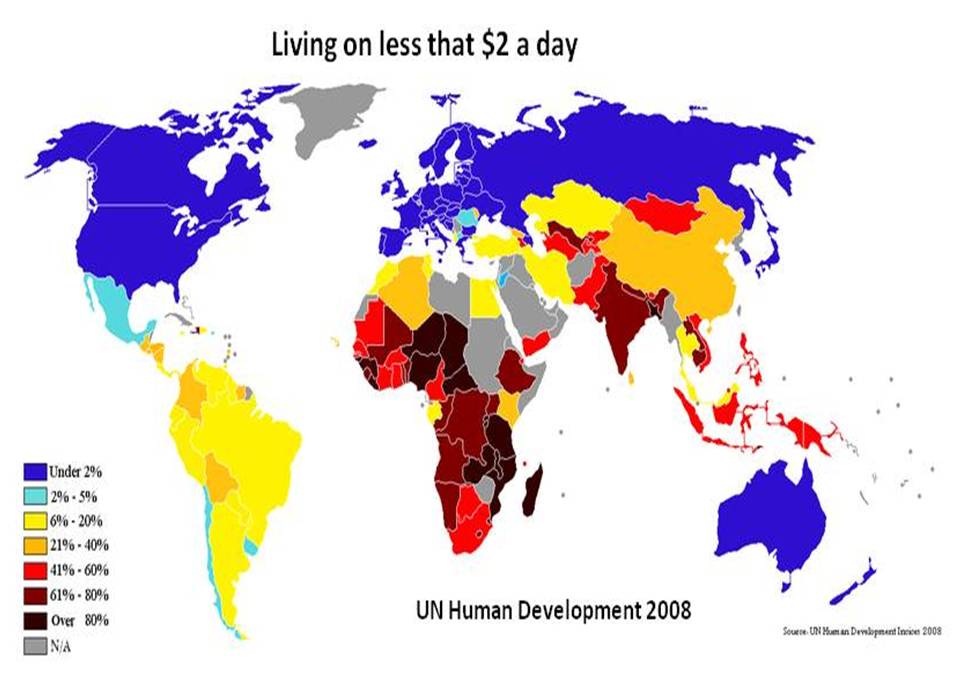
For wheat, maize and barley, there is a clearly negative response of global yields to increase temperatures. Based on these we estimate that warming since 1981 has resulted in annual combined losses of these three crops representing roughly 40 Mt or $5 billion per year, as of 2002. The results demonstrate already occurring negative impacts of climate trends on crop yields at the global scale.
Environ. Res. Lett. 2 (March 2007) 014002 doi:10.1088/1748-9326/2/1/014002
Global scale climate - crop yield relationships and the impacts of recent warming D. Lobell and C. Field.
Environ. Res. Lett. 2 (March 2007) 014002 doi:10.1088/1748-9326/2/1/014002
Global scale climate - crop yield relationships and the impacts of recent warming D. Lobell and C. Field.
This page looks at the crucial importance of well known pre-existing human population socio-economic deprivations and environmental degradation on top of which global warming and climate change are just starting to have significant impacts.
It is for this reason than global climate change is referred to as a multiplier of environmental and public health degradation and damages.
It is for this reason than global climate change is referred to as a multiplier of environmental and public health degradation and damages.
This complicated illustration is based on a World Health Organization climate change graphic converted for agricultural health.
It shows the large number of adverse impacts from global warming and climate change, all impacting agriculture.
Many of these interactions are self reinforcing. For example, global warming and climate change impairs both the health of crops and the worker for the crops. Less food impairs the workers health even more.
From this, it can be seen that the many adverse effects of global warming and global climate change coming on top of the many well known ongoing pre-existing problems, will have a devastating effect on agriculture.
It also shows that it is impossible for scientists to expect that their
mathematical computer models could ever predict the actual full impact of global warming and climate change in the real world.
It shows the large number of adverse impacts from global warming and climate change, all impacting agriculture.
Many of these interactions are self reinforcing. For example, global warming and climate change impairs both the health of crops and the worker for the crops. Less food impairs the workers health even more.
From this, it can be seen that the many adverse effects of global warming and global climate change coming on top of the many well known ongoing pre-existing problems, will have a devastating effect on agriculture.
It also shows that it is impossible for scientists to expect that their
mathematical computer models could ever predict the actual full impact of global warming and climate change in the real world.
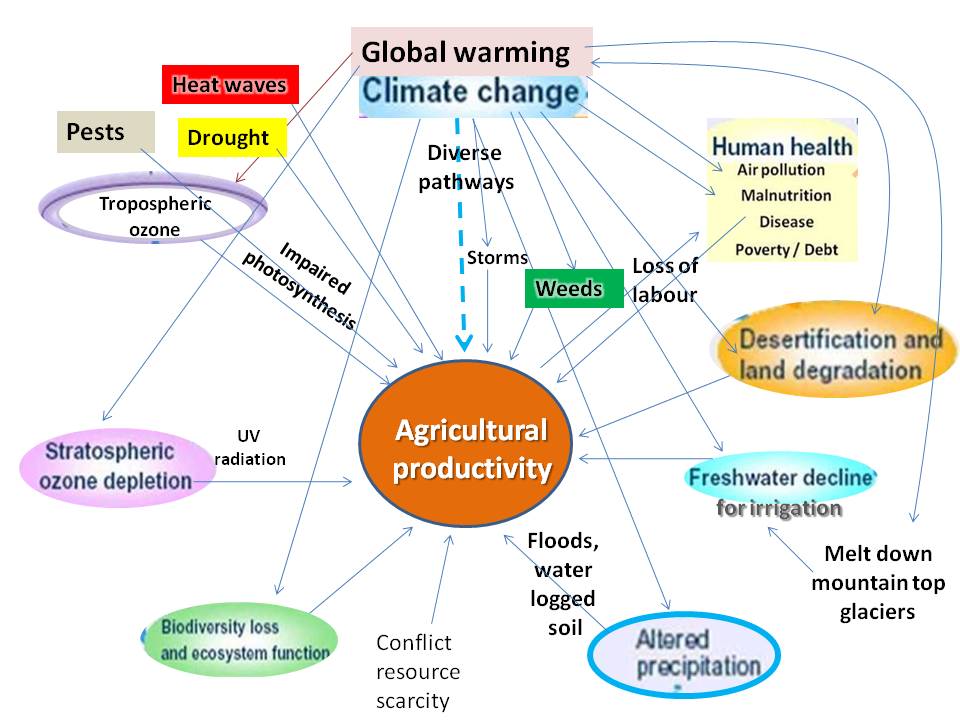
Background
China is the world’s leading producer of wheat. India is number two. (The United States is third.) In contrast to the United States, most wheat grown in China and India is irrigated. With rice, these two countries totally dominate the world harvest.
The prospects for the harvests of wheat and rice, in these two countries, each with over a billion people, are of concern everywhere. We live in an integrated world food economy, one where harvest shortfalls anywhere can drive up food prices everywhere.
Rising temperature also directly affects crop yields. In a study published by the U.S. National Academy of Sciences, an international team of scientists confirmed the rule of thumb emerging among crop ecologists that for each 1 degree Celsius rise in temperature above the norm during the growing season, we can expect a 10-percent decline in wheat and rice yields. In a world with limited grain stocks—a world that is only one poor harvest away from chaos in grain markets—a crop-shrinking heat wave in a major grain-producing region could lead to politically destabilizing food shortages.
-Lester Brown
2009
The prospects for the harvests of wheat and rice, in these two countries, each with over a billion people, are of concern everywhere. We live in an integrated world food economy, one where harvest shortfalls anywhere can drive up food prices everywhere.
Rising temperature also directly affects crop yields. In a study published by the U.S. National Academy of Sciences, an international team of scientists confirmed the rule of thumb emerging among crop ecologists that for each 1 degree Celsius rise in temperature above the norm during the growing season, we can expect a 10-percent decline in wheat and rice yields. In a world with limited grain stocks—a world that is only one poor harvest away from chaos in grain markets—a crop-shrinking heat wave in a major grain-producing region could lead to politically destabilizing food shortages.
-Lester Brown
2009
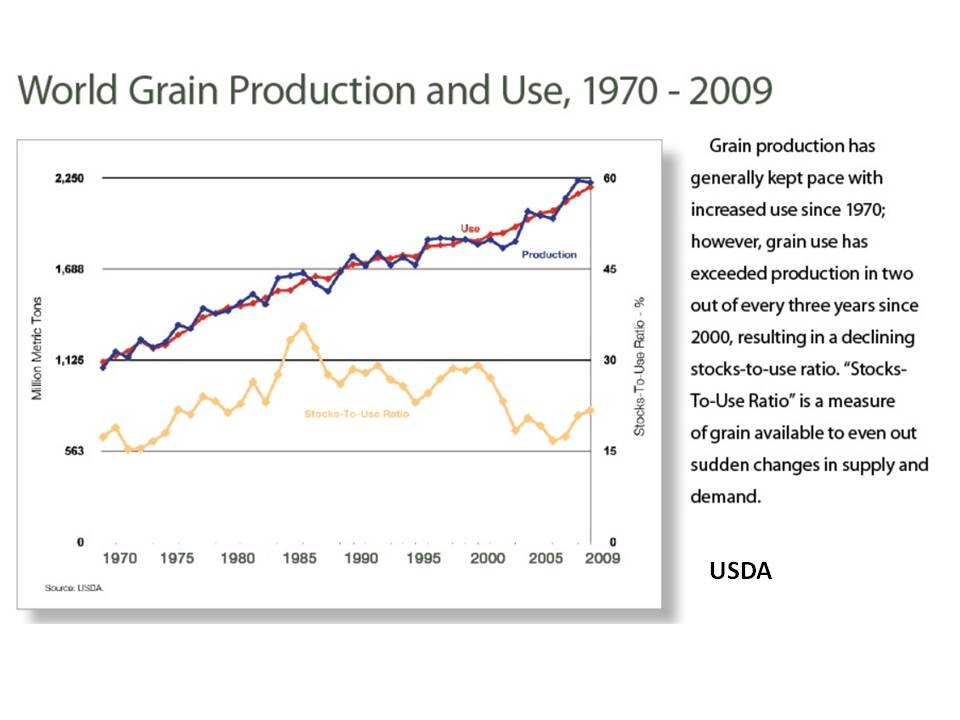
Background